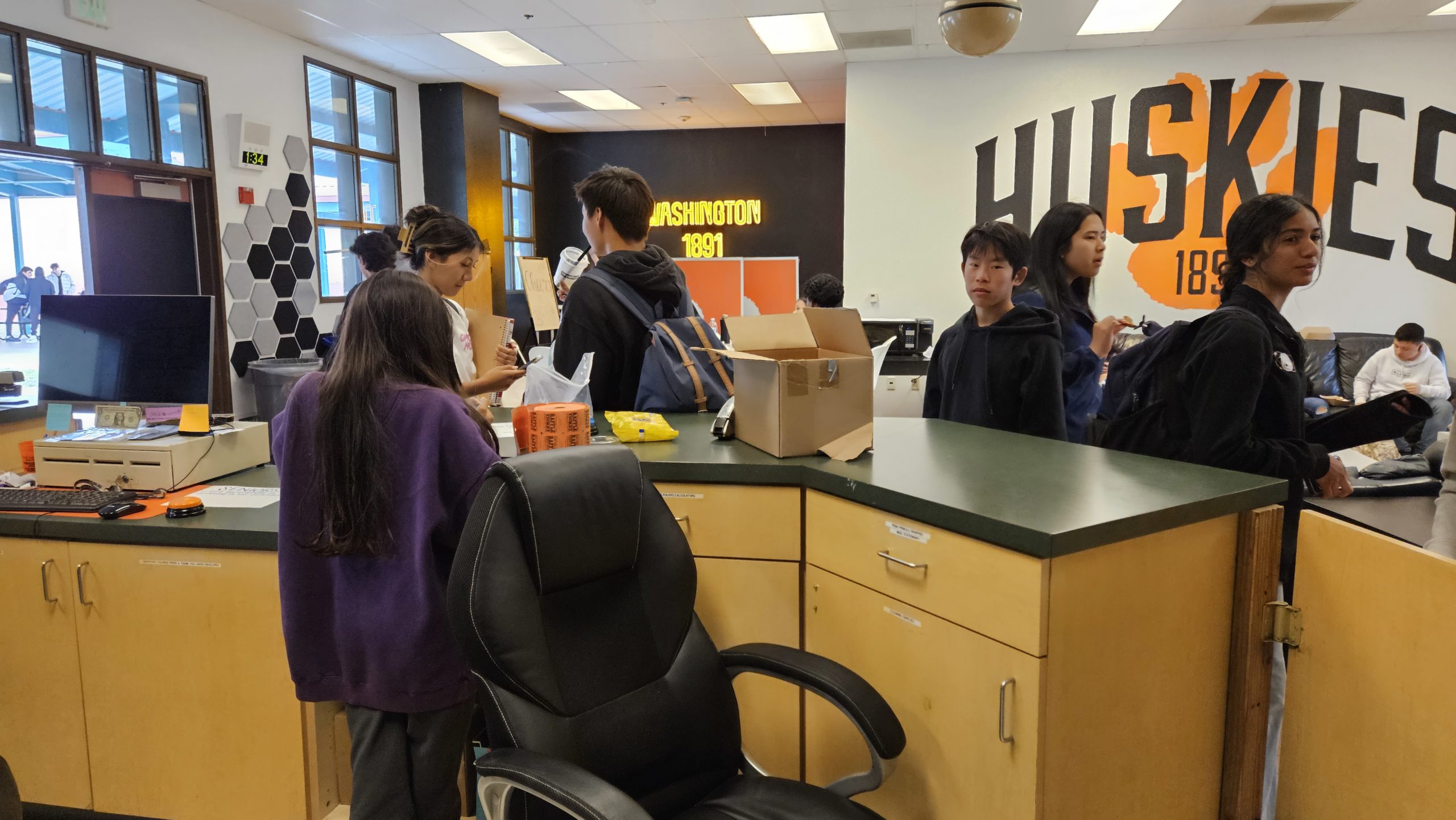Image from author.
Many students at Washington can go through their full four years, from freshman in highschool to freshman in college without knowing anything about the inner workings of the ASB. They can look at the student center, and only enter for the sake of turning in their service learning hours. However, some investigation shows how the ASB is currently organized, and a reading through the ASB’s old constitution, which is not currently in use, shows how they’ve changed in 20 years.
When referring to ASB, a student is referring to the entirety of the team who organizes events, fundraisers, the daily bulletin, and the student center. This is not given to one group, but rather many commissions. These commissions include the entirety of the leadership class, made of about 50 people, Freshman year elected officers (who are not in the leadership class because of their restricted schedule) and interns (who are mostly there to learn about leadership, but also lend a hand when they’re needed)..
The whole group is split into two categories, elected commissions and appointed commissions, who both answer to the Student Activities Director, Mr. Soltau. Elected commissions are composed of the ASB officers (president, vice president, treasurer, and secretary of the entire student body) as well as class officers, where each year has their own 3 (president, vice president, and treasurer). These officers are picked by a simple plurality, where the candidate who receives the most votes from their respective class (or from the entire voting base of the school in the case of ASB officers). Each of the commissions is given tasks by the Student Activities Director. When asked about how these tasks are given, Pavi Dhillon, president of the ASB, stated “we write it on the board and when we’re done we check it off.”
The elected ASB officers have authority over who is in the appointed commissions. Of these appointed commissions, there are 11 of these appointed commissions, and there are some that are quite notable to the average student: Rallies, who host the events held in the amphitheater; Public Relations, who create the posters seen around campus; Inter-Organizational Council (IOC) who organize the clubs and sports teams; and Photography, who is (ironically) the only appointed commissions who does not have a photo of its members. What each commission does each day is decided situationally, with the specific tasks each is given reflecting what is happening on campus. These commissions can be thought of as the executive branch and its departments, acting on decisions given by a leader, who in this case is Mr. Soltau.
A student currently in a United States Government may question where the other two branches are, if I am comparing the ASB to the executive branch. The answer is that they used to exist, however, they were dissolved. These are preserved in the previously mentioned ASB constitution of 2003, which is the most recent version uploaded to the ASB website. While it is meant to be updated at least once annually, the version for 2023 is currently being written.
Parts of the document still apply. The first two articles could be applied today, as most of it is still the same. The Husky is still the school’s mascot, and ASB members are marked by something on their ID cards. The commissions are mostly the same, however some have been added, and the Soda Commission has been removed entirely. Article 5 is about ASB council meetings, and minutes are still available by request. However, even with all these similarities, many differences between the 2003 and 2023 ASB still exit.
Article 3 is where a relic of the past is preserved. Section A describes two bodies that have not been mentioned so far, the Representative Assembly and Constitution Interpretation Committee, as well as stating that the IOC used to serve as a mediating body between the clubs and the ASB council.
Article 6 describes the first of the bodies which no longer exist, the Representative Assembly. This was a group made up of representatives from the third period classes, specifically forbidding members of the student council. The old document states that this body was supposed to have “the legislative power of Washington High School,” however, it does not actually state what areas it may legislate.
Article 7 describes the second of the bodies which no longer exist, the Constitution Interpretation Committee (CIC). This group was meant to act as an emergency measure, when the actions of the ASB Council or Representative Assembly are accused of being against the ASB Constitution.
Article 8 describes the Inter-Organization Council, or IOC. While the current IOC is currently run as an appointed commission, the original IOC was independent from the ASB. The IOC was initially made of a representative from each club, as well as the captain of each sports team, of every level.
The rest of the old ASB constitution does not have much. There’s an article about the bylaws, which are also currently being updated for the 2023-24 school year. There’s also referendums, which may be called by students, and the process of amending the ASB constitution. No date was given on when the new versions of the documents, or a more recent version of the ASB constitution, will be released.
Richard Pang is a senior at Washington who was born and raised in Fremont. He is a reporter in his first year with The Hatchet. You might find him looking at aspects of student culture that get overlooked. On his off hours, you can find him organizing events on online platforms or doing some research on whatever topic caught his interest this week. He’s not sure where life will take him or how college will go, but there’s no fun in knowing what will happen.


